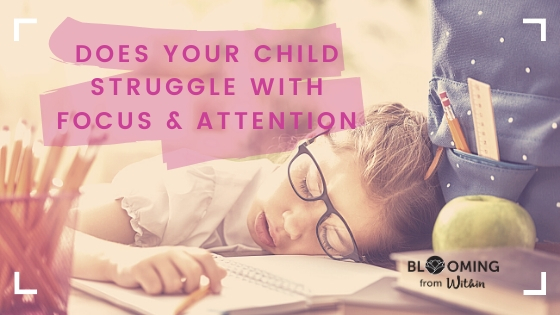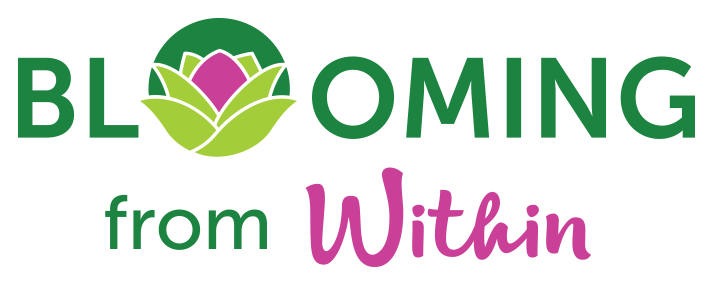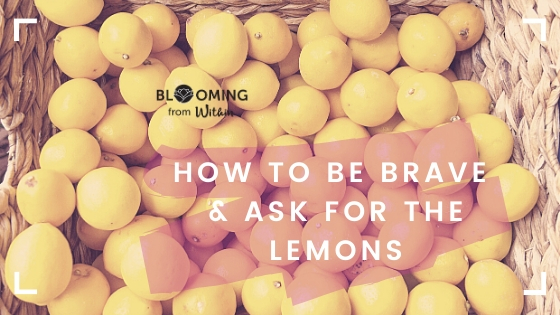
Does Your Child Struggle With Focus & Attention
Here’s 18 active ways to increase ‘self-regulation’ during COVID
As a practising kinesiologist and health coach, I’ve got access to a bunch of resources which support children with learning challenges. My own child is challenged with sequencing. This means her ability to arrange language, thoughts, information and actions in an effective order gets wonky (very technical term). Many kids with learning and thinking differences have trouble with sequencing as it can affect the ability to follow instructions, speak properly and complete multi-step tasks.
Now that we are in lockdown, there are red flags rising with more work to do. These flags are also indicative of why she is so frustrated and emotional at the end of the school day — because she is still missing cues and unable to follow instructions correctly.
It’s time for some proprioceptive input to manually improve my daughter’s sensory processing neural pathways. Oh goody, I get to talk science!
I can already hear you moaning, “what is proprioception”! Proprioception is defined as the body’s ability to perceive its own position in space. Without getting too technical, I’ll try to explain movement in simple terms.
We have a thought which drives a plan of where the body wants to move to. The motor driving component of the brain sends a message to the muscles via the nerves, and badda bing badda boom we have movement (it’s actually way more technical than that but I’d have you asleep in seconds).
There are special neurological receptors in all of our joints, which send information back to the ‘movement’ part of the brain. The brain then processes these ‘feedback’ messages as to whether we are at our intended place, or need to make modification and redirect movement to steer us back on course. Therefore this feedback is constantly being adjusted by the brain talking to the proprioceptors.
In her recent newsletter, Heather Greutman calls exercising these proprioceptors as ‘heavy work’. She discusses “Heavy work input can have a calming and focusing effect on your child, especially if they are craving this type of input.”
I can hear you asking whether your child requires additional proprioceptive feedback? Heather suggested “they may be constantly moving, jumping, climbing, or crashing into things. They may have a hard time staying seated and focusing during homework.” For me as a parent and practitioner, these are very easy cues to be on the lookout for to suggest a flag is being waved.
You can read Heather’s article on sensory avoidance versus sensory seeking behaviours here to gain further understanding regarding the special small people in your world.
Often times children will hold it together for school and then come home and seemingly “fall apart.” My daughter is no exception and is more often than not a hot firey emotional mess when I pick her up from school. It takes me about twenty minutes of grounding exercises and brain snacks to bring her back to the planet before we can debrief. So when clients visit me in my clinic and explain their frustrations I can honestly say “I get it!”.
For some kids, homework is a massive struggle. The reason for this is their brains are receiving messages from their bodies “I NEED TO MOVE!”. I am positive that we can all agree, it’s important to provide appropriate time and space for your child to move and get their energy out, especially after they have sat in class during the day.
Heather Greutman suggests ‘heavy work activities’ are a great way to do that! I would agree, and as someone who had learning challenges and overcame them as an adult, I would agree.

1. Push a Filled Laundry Basket
Be sure the laundry basket is weighted enough that in order to ‘push’ the basket requires some work. The goal isn’t to struggle.
Whilst Heather suggests you can make it into a race or obstacle course, I’ve got friends and clients with boys, who complain that they annually need to repaint walls. So the suggestion of placing stuffed animals on a blanket may result in a more aesthetically appealing outcome (this works great for younger kids), or any other random items from around your house.
2 Crashing
Heather reports children who crave proprioceptive input can often be found “crashing” into things. Whether rubbing on the walls down the hallway or literally jumping off furniture or beds. I can attend to feeling this way after a long general anesthetic or some heavy pain meds will have similar effects.
Crashing safely is always the preferred outcome.Bean bags, piling up blankets and pillows, or making a huge ball pit out of a small swimming pool can work.
The movement of crashing allows a quasi reset of our neurology for those who have bodies that have been messaging the brain all day, behaved and now need release. It’s fabulous for those gorgeous little people with too much sensory seeking behaviour, or difficulty regulating their arousal states.


3 Jumping
I am a huge fan of the trampoline or jump rope. Due to the unstable or flexible landing space, the body sends a myriad of information to the brain for processing where you are in the world.
I’ve had kids who literally can’t lie on my table for more than ten minutes without fidgeting. Send them outside to jump rope or on the trampoline and bingo, they are compliantly still for an hour.
Jump rope or jumping on a pogo stick are also great options.
4 Wheelbarrow Walking
This requires good upper body strength of all involved. Heather raves that this is a good old-fashioned activity that is amazing for heavy work. “The child balances on their hands while you hold their ankles up off the ground. Then have them walk on their hands while you keep holding their ankles. You may need to hold at the knees or waist if your child needs more support with this. As they get better, add races, obstacle courses or sprints while wheelbarrow walking.”


5 Clean The House
As you read this I’m hearing an unequivocal “YES!” from parents. Pushing and pulling actions using a vacuum, broom, or mop are all great heavy work activities that require no additional tools or set-up.
The added bonus of this is that if you maintain movement, instead of stop-start, it becomes a cardio workout as well. For those people who struggle with finite movement/direction control, encourage slow movements. At least with vacuuming on carpet and mopping, you can see where you go so encourage straight lines.
6 Push a shopping trolley
This one does come with a mandatory supervision warning and perhaps don’t start in the car park! Some of our small people have challenges with their depth perception, as well as movement control.
Walking a shopping trolley together trains the brain to reprogram ‘fine’ muscle movement, together with the big muscle push and pull movements. The combination is fabulous for heavy work training.

7 Carry Groceries
Heather suggests after pushing the grocery cart, come home and have them help you carry groceries inside. Small people often love to be involved and this is a fabulous way to engage all the postural muscles of the body with the movement of the limbs. You can all be practising ergonomic knee bending for big lifts, correct movement of feet to avoid twisting with loads etc.
In times of COVID-19, this is a fabulous way of learning to pack your own groceries and use the fine motor movement to pick up and expertly pack groceries into bags, rather than shoving everything into the bag.

8 Washing Windows
I’m immediately taken to the Karate Kid movie with this one, but it is smack on. Use a spray bottle to spray down the window (awesome heavy work for the hands!) and then use a washcloth to wipe the window clean.
I’ve used this one myself with my daughter and practised our foreign languages when counting the squirting, or up and down, saying the phrases as we go. When that gets old we dance-wash to our favourite boppy music. The technique is still purposeful with the hands, arms and ergonomic back maintained in a straight position. It also works when you wash the car!
9 Knead Dough
This is a great heavy work to connect the proprioceptive messaging for the fingers and hands together. It’s also awesome from those precious darlings who need additional sensory touch and very tactile.
During lockdown, we’ve been kneading and proving bread by hand.


10 Chew Gum Or Crunchy Foods
You can’t begin to imagine the amount of neurological activity which occurs in the mouth, the jaw, the tongue and then in the brain to activate speech. in order to get it all working at the same time and in the appropriate sequence. Chewing gum or crunchy foods is like a mini workout for the mouth! Your mouth is therefore full of proprioceptive receptors.
11 Sip Water From A Straw
Seriously, again, so simple! The act of sucking through a straw is again another great proprioceptive activity with the mouth. If you have a child who has some oral sensitivities for gravitates towards putting things in their mouth all the time, this is a great one.


12 Separate & Take Out The Garbage
I laughed with Heather when she asked: “are you loving all the working around the house options?” Housework and chores can be life lessons for kids to learn how to contribute their small piece to the family dynamic as well as amazing heavy work opportunities.
As an environmental scientist, I always encourage segregation first. For those sensory sensitive souls, feeling the texture of cardboard versus aluminium and glass may just do the trick. For others, seeing all the colours may hit the mark.
Heather recommends never missing “the opportunity for taking out the trash”. Emptying smaller garbage receptacles into large garbage bags, carrying the bags to the wheelie bin or pulling the bins out to the street for pickup are all great options.
13 Scrub Surfaces With A Brush Or Sponge
Cleaning gifts the beautiful child with an array of heavy workout opportunities — on the chalkboard or whiteboard, wiping down a table or scrubbing off a dirty surface all give great proprioceptive input through the upper body. They may initially view this as work, but have them engage their eyes to see the difference they make with each wipe! They can then track their own progress.
Additionally, the special child may be attracted or adverse to the sponge or brush based on their unique challenges.


14 Help in The Garden
Most kids love getting outside. For our sensory challenged friends moving dirt with a shovel, filling up a wheelbarrow and moving dirt or rocks, or digging in the soil are all great options. There are so many benefits.
Firstly anyone who places their hands in the dirt will instantly ground themselves. Nature has a marvellous way of grounding us. Growing plants from seeds is a lovely daily activity for a child and serves a purpose to get them outside. Watching the evolution of something you grow to eventually pick and eat is both time-consuming and quiet. Know that lifting the watering can is a fantastic proprioception activity.
Secondly, the non-uniform texture of soil provides a myriad of stimulation to the brain between fingers and toes.
Thirdly, coordination of implements engages everything from the extremities to the large muscle groups, with the goal to work in coordinated and productive movement.
15 Pillow Fights
I laughed out loud and repeat Heather’s following disclaimer “please make sure your child is supervised and don’t let it get out of hand”. That said a good fun pillow fight is a great way to get quick bursts on input. The movement requires the semi-accurate eye to hand coordination, plus the movement of your torso pulling or pushing whilst maintaining balance is exceptional exercise.


16 Beach Fun
If you live near a beach, go dig in the wet sand with a shovel or your hands. Like the dirt, wet sand provides enormous stimulation from fingertips through the hands.
Whilst you’re there, paddle in the water! Walking against an outgoing tide will always test proprioception!
17 Bathe the Dog
In my household, this activity generates a lot of laughter. Firstly because mummy always seems to get the wettest! The puppies and the kid all love the tactile stimulation of shared touch. There’s a beautiful connection between a child and their pet and bathing adds to the bond as well as ticking the responsibility list.
Washing an animal is a great tactile and proprioceptive input with the fingers and arms.


18 Riding A Bike
The simple act of riding a bike is a great heavy work activity. For older children, you can take them to a mountain bike trail or on longer bike rides to provide a little more input.
The involvement of sensory input from what the eyes see, to operating arms and legs simultaneously is a fabulous exercise for the brain.
I would love to give full credit to Heather Greutman (Growing Hands-On Kids) and her fabulous resource newsletter this week. Heather provides a myriad of well researched and easy to implement resources for both practitioners and parents of gorgeous kids who need just a bit more loving attention. Visit her webpage, and note this is not a paid testimonial, just a grateful share from a practice with a beautiful kid.
Resources
Greutman, Heather(February 5, 2019) “Home & Telehealth Activity Ideas”, email newsletter.




